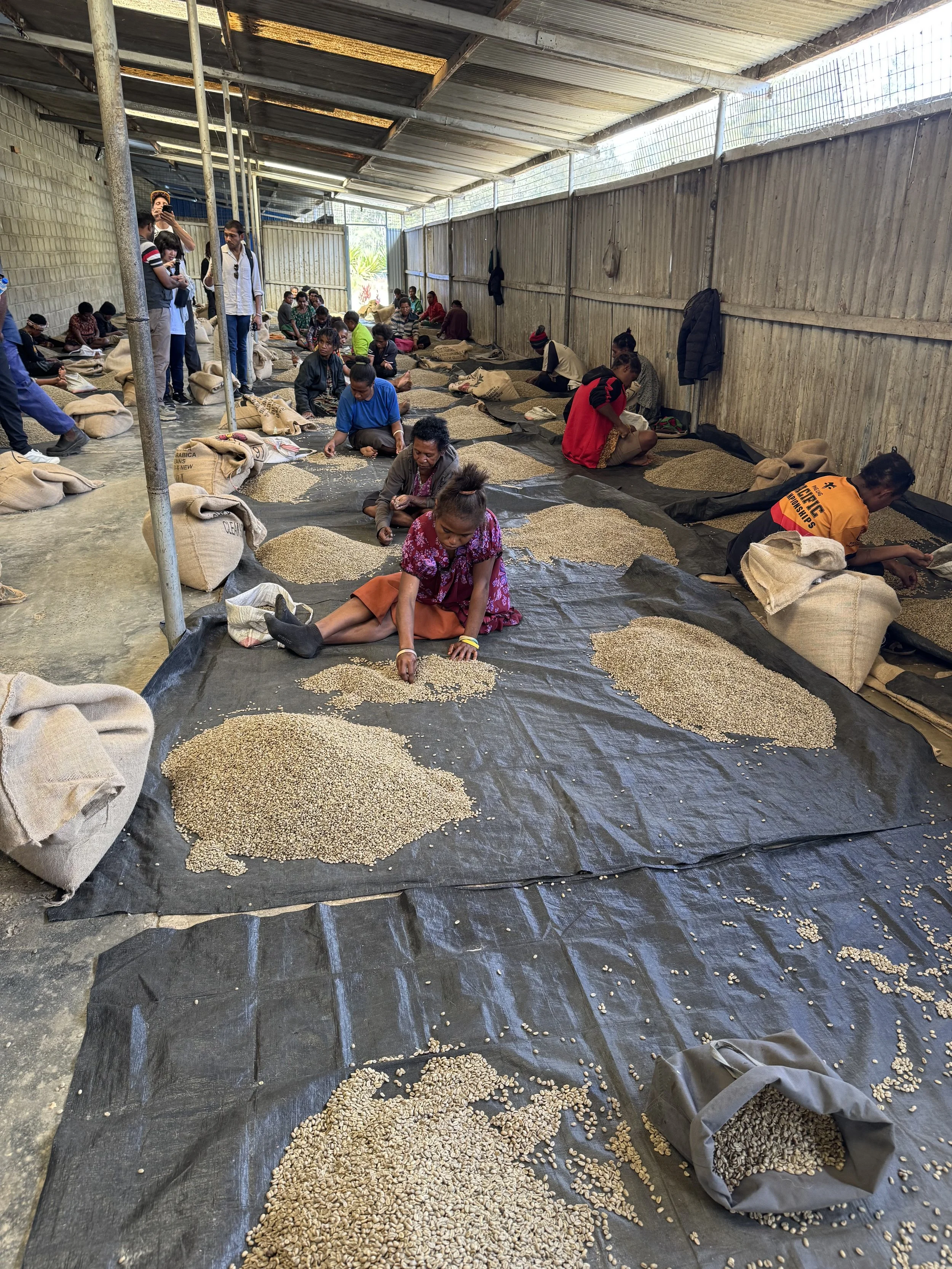PEABERRY
We’re featuring two coffees right now that we’ve labeled as “peaberry,” and they happen to be from the two leading producers of peaberry coffees: Papua New Guinea and Tanzania. You might see this on our bags as “PB,” but what exactly does that mean? First, let’s take a brief look at coffee cherry anatomy.
We all know that coffee is a fruit – and that fruit is divided into several different layers. First is a thin layer of skin; followed by another thin layer of fruit that we commonly call mucilage. While this layer of fruit is super tasty, there isn’t much there. Most of the coffee cherry is taken up by two pits, or seeds, surrounded by a layer called parchment. Each individual seed is then covered by a final layer that sometimes subsists even through roasting called silverskin. These two seeds face each other – this leads to the easily identifiable flat surface you can find on any given coffee “bean.”
Sometimes, however, a cherry will develop with only one seed inside. This is due to a genetic mutation or defect, and we call that mutation a peaberry. Peaberries are easily spot-able: they’ll be rounded rather than having a flat edge. You can find peaberries in nearly every lot of coffee – almost every coffee tree will produce a few, and generally they’re just mixed in to the harvest. Some enterprising farmers and co-ops decided to sort them out into their own lot, usually using sorting screens. This was first done in Tanzania, but is done throughout the coffee growing world now, albeit somewhat rarely. Primarily used as a marketing tool, farms have begun offering separated lots of peaberry in the same way that other producers might separate out specific varieties. The question is – does it taste any different? The answer? It’s complicated.
Anecdotally, we think that peaberry has more perceived sweetness. This makes sense if you think about it; all the energy and sugars from the cherry go into just one seed rather than two. Proving this turns out to be next to difficult – there are a great deal of variables, even on the farm, that make it nearly impossible to empirically test this hypothesis. Look at it more as you would tasting a single variety like pink bourbon or gesha: peaberry is a unique sorting process that allows us to taste a singular coffee that developed in a specific way.

